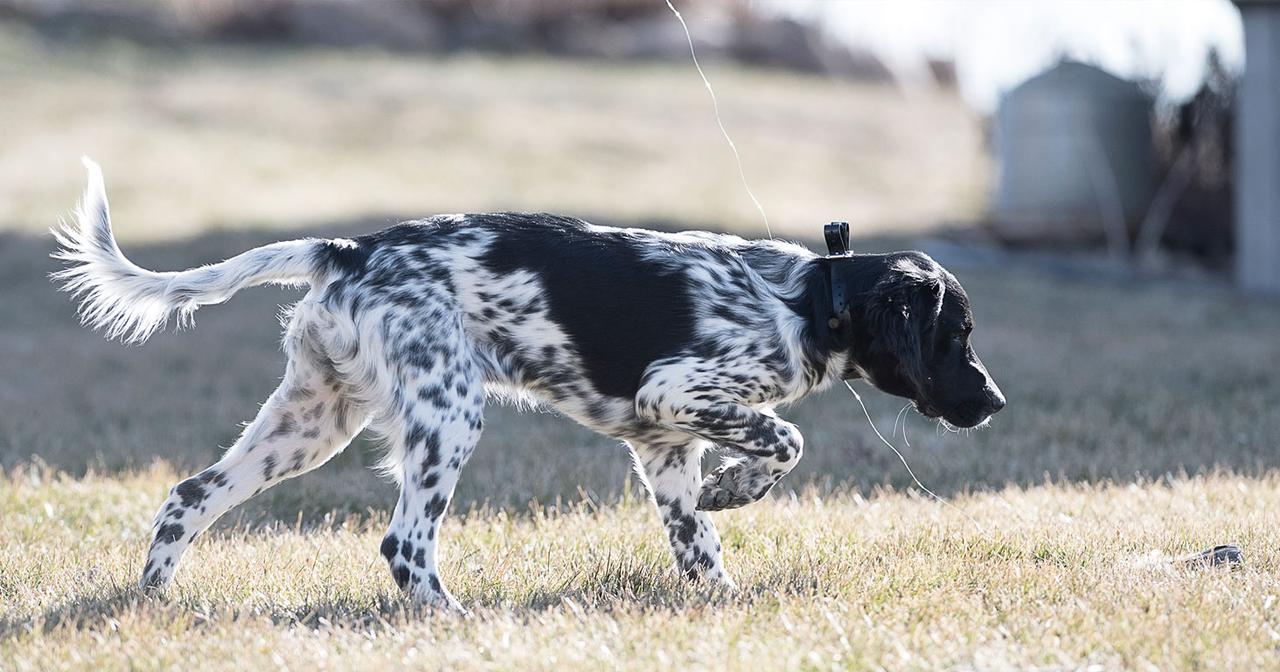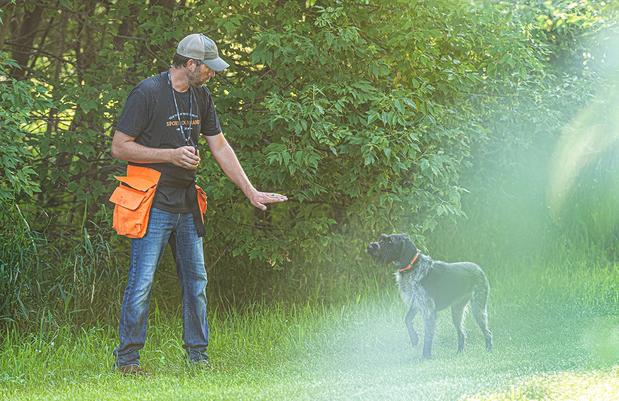
5 Starter Tips for Raising a Great Pointing Dog
Posted by LTC Jim MorehouseSo, you have a new pointing dog puppy in your house. Congratulations! I hope all your hopes and dreams about turning that pup into a bird-finding pro come true. But, as is true with all things in life, excellence doesn’t happen overnight. Everything is a process, and that’s especially true in dog training.
Before you dig into the hard work of developing a finished pointing dog, you need to lay the groundwork. That begins the day you bring your new pup home. There are numerous things you can do with a young dog that don’t qualify as what we think of as “formal” training, but they are hugely important in your dog’s development. Let me outline a few of them for you here.
1. Socialize, socialize, socialize. I can’t emphasize enough how important it is to get your new pup involved in new situations as often as possible. Every day is another chance for your pup to gain a new experience of some sort. A well-socialized pup is going to be more confident and better able to handle pressure when it’s time for formal training.
When I say socializing, I’m not only talking about getting your dog comfortable with the people in your home. Try to take your puppy to as many new places as possible. Whether it’s a walk in the park or running an errand to the store, include your pup. The new sights and smells, and interactions with a variety of people, combine to help your pup more quickly adjust to new environments and new training exercises in the future.
2. Keep experiences positive, always. A puppy will remember a negative experience much longer than a positive one. Puppies do puppy stuff. If you lose your temper every time it gets into mischief, believe me, your negative reaction is going to slow down your training later on because you’ll be creating a dog that’s scared to death of making a mistake.
It’s up to you avoid situations that cause your pup to become timid or unsure of itself. One obvious example is creating a positive housebreaking experience. If you let your pup out of its crate and it piddles on the floor, the correct response on your part is not to punish it. You need to take responsibility for what happened. When pup comes out of the crate, you need to get it out the door and into the yard to do its business. And then heap on the praise. Before long your pup will be heading right to the door because going outside will be a positive experience.
3. Get your pup into some feathers. Just because you’re not formally training yet doesn’t mean you shouldn’t let your pup learn how much fun it is to be around live, flapping birds. Quail are ideal birds for introducing puppies to feathers. Get a quail that can’t fly off (you can pull its longest flight feathers to make sure it can’t go far) and put it right out in your yard in plain sight. Note that I don’t bother with hiding birds in cover at this stage. This isn’t about hunting, it’s just about getting your pup excited for feathers.
Let your pup chase the quail. It might catch it or it might not. It will probably even point it a few times. It’s all good as long as the idea that birds are fun is getting through. Pigeons are fine to use for an introduction to feathers too, but use caution with a very young pup because a pigeon can flap pretty hard. You want to avoid having your pup get whacked on the nose before it has learned what birds are all about.
Note: You’ll find a four-part series I wrote on training with live birds. Note that everything I covered there is taking place during the formal training stage, while right now I’m talking about puppies.
4. Don’t rush the process. It’s natural to imagine your new pup as a finished dog that will give you bragging rights among all your buddies. I hope you get to that stage someday, I really do. But the fact is that you have to give your young dog time to mature.
I don’t put any real pressure on my dogs until they’re at least 18 months old. Now, that doesn’t mean we’re not getting out to the field. During their first year, I certainly take my dogs out hunting, but I never let anyone else come with me. I don’t need a bunch of people shooting and yelling and creating a bunch of unnecessary distractions.
The only thing I want my dogs to know before we’ve gotten into formal training is that getting into the truck is something to look forward to. Once we’re out in the field, I don’t care if they chase birds or point them. It doesn’t really matter, because we’re going to work on patterning and bird manners and all of the other “big dog” stuff later.
I should add that even though I said we’re “hunting,” I’m not shooting at birds that aren’t pointed. However, if a young dog holds a point for any time at all, even if it’s just a flash point, I’ll go ahead and shoot. That dog is learning on its own that it can’t catch birds, but if it stops, it might very well get the chance to retrieve one.
5. Get your pup used to wearing its e-collar. When my pups are 3 or 4 months old, I start putting a SportDOG e-collar on them whenever we go outside. You should do the same, BUT, and this is very important, you are not turning on the collar. In fact, don’t even take the transmitter along. E-collar training comes after you’ve taught actual commands to your dog. In some ways, I don’t consider it completely accurate to call it a “training” device; I consider the e-collar to be a “reinforcement” device.
So, you might ask why I bother to strap an e-collar on my young dog if I’m not going to use it. The answer is simple: If a dog associates wearing the e-collar with something positive (see No. 2 above) such as getting to run around chasing birds and having fun, the transition to using it for reinforcement during formal training will be a snap.
Keep these five factors in mind as you welcome your new pointing dog pup into the family and I can practically guarantee you that if you do your part, your dog will become everything you hoped for.

LTC Jim Morehouse
Tuscon, AZ
Raised in the Finger Lakes area of New York State, Jim was involved in hunting and birddogs from an early age. Upon graduation from college, he joined the US Army in 1967. He served until 1989, retiring at the rank of Lieutenant Colonel. After his retirement, Jim and his wife...
Related Products
Related Articles




